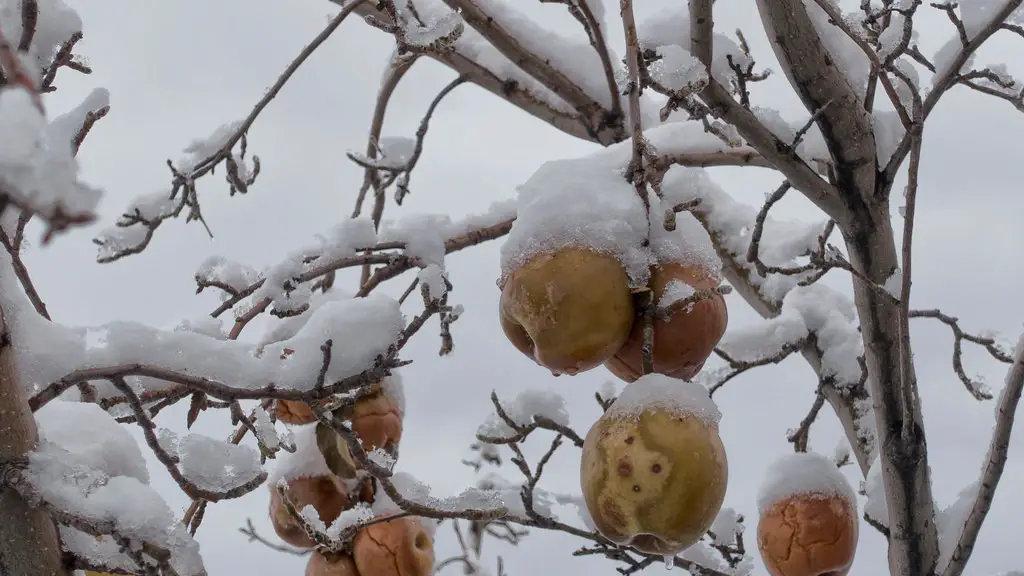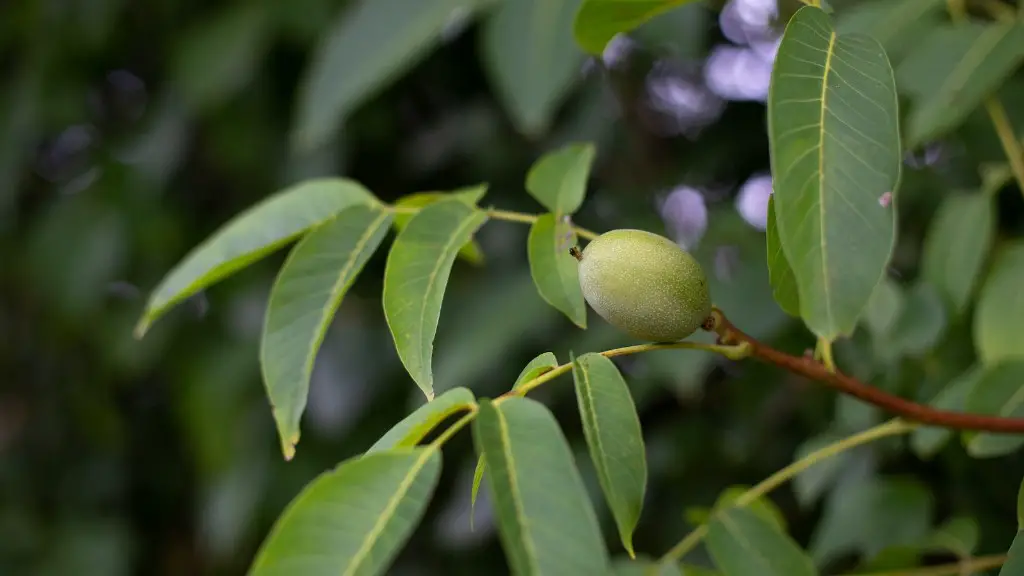Avocado has become an extremely popular snack all over the world, with its buttery form and intense nutty, nutty flavour. It is no surprise then that home gardeners are now increasingly interested in growing their own avocado tree in their garden. While the process of starting and nurturing a growing avocado tree is not particularly easy, it is worth the effort for the reward of sweet, ripe avocados you can pluck from your own tree. But how long does it take for an avocado tree to bear fruit?
The short answer is that it depends on the variety of avocado tree planted and the type of soil and climate in which it is grown. Generally, if planted in suitable soil and with the correct amount of sun and water, the tree will begin bearing fruit four to seven years from the date of planting – though some tree varieties will take up to 10 years to start bearing fruit. Avocado trees grown in California generally bear fruit a bit faster- four to five years after planting- compared to trees in more humid climates, like Florida, which can take up to 12 years.
Experts recommend planting multiple avocados in the same area – two to three trees at least – in order to ensure pollination and thus better yields. This is because when grown separately, it is difficult for avocado trees to self-pollinate, so planting multiple trees helps them to cross-pollinate, leading to high-quality fruits.The larger the avocado tree, the higher yields they will produce.The size of an avocado tree can vary depending on the variety of soil, climate and the pruning it receives.Experts suggest the ideal size for an avocado tree is 6-8 metres – once the tree attains this size, the fruit production will further increase.
It is important to ensure the right kind of nutrition, soil and water for the growing tree to produce good fruits. Too much water or too little water can be detrimental to the fruit yield, so it is important to give the tree the right amount of hydration regularly. Additionally, an avocado tree requires fertilizer and micronutrients in order to grow and produce better fruit.
Ultimately, growing an avocado tree may take some time and effort, but with the right conditions and care, the sweet reward you get will certainly be worth it.
What To Do When There’s a Frost
Frost can be a major issue for avocado tree growers as it can damage the leaves, flowers, and young fruits of an avocado tree, resulting in poor yields. It is very important for tree growers to protect their trees from frost. Depending on the region in which the tree is located and the severity of the frost, there can be different ways to protect it.
The most basic and most effective way to protect the plant from frost is to cover it. This can be done by covering the tree with a bed sheet, tarp or blanket and making sure that the cover touches the ground. This can help to keep in the warmth and block out the frost.
Another way to protect the tree from frost is to ensure that the tree is planted in a location well-protected from the wind. Wind can cause the air to drop in temperature and increase the risk of frost damage.
It is also important for tree growers in cold climates to acquire varieties of avocado trees that are suitable for their climate. Certain varieties of avocado trees are naturally more frost-resistant and can better survive in cold conditions. Some of these varieties include ‘Puebla’, ‘Starkrimson’, ‘Fuerte’ and ‘Hass’.
Harvesting and Storing of Avocado Fruits
When harvesting avocados, it is important to make sure that the fruits are ripe. Immature fruits will be hard and will lack flavour. Ripe avocados, on the other hand, will be soft and dark in colour.
In order to store the fruits properly and ensure that they stay fresh longer, they should be stored in a cool, dark place. They can also be stored in the refrigerator, sealed tightly in plastic wrap. This can help keep the fruits fresh for up to 10 days.
It is also important to note that avocados can easily be bruised, so care should be taken when picking them from the tree and when storing them.
Pests and Diseases in Avocado Trees
Avocado trees can be prone to various pest infestations and diseases. The most common pests include the citrus mealybug, avocado lace bug and avocado thrips. Additionally, avocado trees can contract root and stem diseases such as Phytophthora root rot, avocado-foolzbrug and Verticillium wilt.
It is essential to watch out for these pests and diseases early on and take steps to prevent or manage them before they can cause any significant damage to the tree. This can be done by regularly inspecting the tree and its foliage, and if necessary, using the right insecticides or fungicides to manage the pests or diseases.
Taking good care of the avocado tree by providing the right conditions and environment can help to keep it healthy and strong.
Common Mistakes Made In Cultivating Avocado Trees
Growing an avocado tree can be a rewarding experience but it is important to make sure that the tree is grows correctly and meets its optimum potential. Common mistakes made in the cultivation of avocado trees include not allowing enough space for the tree to grow, not providing adequate nutrition, not providing enough sun exposure, and neglecting to provide adequate protection from pests and diseases.
It is also important to ensure that the right variety of avocado tree is planted and that it is pruned regularly. Pruning can help the tree to yield more quality fruits and increase its fruit production. Additionally, tree growers should take care to provide the right soil, water and mulch moisture to ensure healthy growth.
Lastly, it is important to protect the avocado tree from any extreme weather that may affect its health or yield.
Cutting and Propagation of Avocado Trees
Avocado trees can be propagated through cutting and this is a relatively simple and efficient way to grow reliable and productive avocado tree clones. When propagated, avocado cuttings should be treated with a rooting hormone and kept in a warm and humid environment. The cuttings should also be kept in soil that is porous and loose and should be watered regularly.
The propagation of avocado trees can take some time and they must be given the right environment, including the right amount of light and water, to ensure that they root properly. It is also important to monitor the cuttings regularly for signs of disease or pest infestation and take measures to protect against them.
If done properly and with the right care, avocado trees can be propagated and grown very successfully in the home garden.
Caring For an Avocado Tree Year Round
Caring for an avocado tree can be a year-round job and it is important to provide the tree with the right conditions and environment for it to produce quality fruits. This can involve providing the right amount of sun and water, and monitoring the tree for pests and diseases that may affect its well-being.
Additionally, it is important to make sure that the tree is pruned regularly and that it is provided with the appropriate nutrients and micronutrients. This will help the tree to grow strong and fruit-bearing. Lastly, protection from extreme weather conditions is also essential for the healthy growth of an avocado tree.



